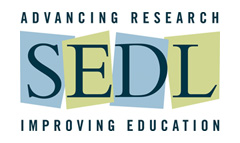You are here
Engineering Adventures
Engineering Adventures (EA), a curriculum for 3rd through 5th graders in out-of-school time settings created by the Boston Museum of Science. EiE's afterschool curriculum Engineering Adventures (EA) features a fictional brother-sister duo who guide kids on engineering adventures around the world. Each EA unit presents a real problem and challenges kids to engineer a solution. There are currently units available for free download. Access Engineering Adventures free 3rd - 5th grade curriculum.
Watch a 20 minute video presentation describing Engineering Adventures and how to utilize the curriculum.
The curriculum units are also supported by an iphone/ipad app to scan QR codes in the Engineering Notebooks so that youth can receive messages from the brother-sister featured in the curriculum. Download the Engineering Adventures App for free.
Watch "New Videos Show "BEST Practice": Four short videos created through EiE's BEST program (Bridging Engineering, Science, and Technology for Elementary Educators) showcase how college courses for preservice teachers can integrate engineering – and the benefits when those college students become classroom teachers.The BEST program helps Massachusetts college faculty develop new instructional strategies to prepare future elementary teachers for classrooms where engineering is a routine part of the school day.BEST is supported by Grant #1003060 from the National Science Foundation.
---
EiE Afterschool Programs Keep Growing!
EiE released the very first unit in our elementary afterschool curriculum "Engineering Adventures" (EA) just two years ago. The first unit of our middle school afterschool curriculum, Engineering Everywhere (EE), followed soon after. Today, educators can choose from six different EA units and four EE units.
Meanwhile, both curricula have been widely adopted. The free EA educator guides have been downloaded nearly 14,000 times since the project launched; EE educator guides have been downloaded about 6,000 times. Bound copies of most guides are now available through the EiE Store, along with convenient materials kits.
Just this month, EA released a new tool for afterschool educators:Educator Resources lists for each unit. These downloadable lists showcase articles, videos, and books tied to the content in the unit.
Both of our afterschool curricula were pilot tested extensively; we found that when students engage with our afterschool engineering materials, they develop more positive attitudes towards engineering and become more confident in their abilities as engineers.
“We are having a great time,” says Connecticut afterschool educator Carla Petruzzi. "[When] I see students during bus duty and in the halls, they tell me they can't wait till afterschool!"
EiE Blog Explores "Engineering Habits of Mind"
This winter on the EiE Blog we're exploring how exposure to engineering in the elementary grades helps students develop what the National Academy of Engineering calls “engineering habits of mind.” Simply put, these habits are ways of thinking that build a foundation for lifelong learning.
The NAE lists six engineering habits, including (1) systems thinking, (2) creativity, (3) optimism, (4) collaboration, (5) communication, and (6) ethical considerations.
That list is a great place to start. But based on our experience working with elementary students and teachers, we see evidence that classroom engineering helps develop othervaluable habits of mind, too. (See the table at left.)
To show what engineering habits of mind look like in the elementary classroom, each EiE blog post is accompanied by a candid short video. What do you see in YOUR classroom? Subscribe to our blog and share your experiences!







